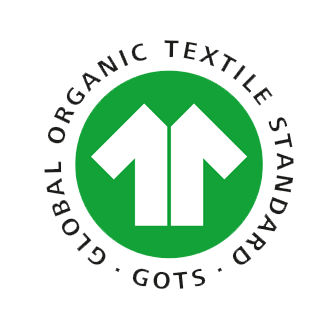China has long been the world’s largest producer of clothing, and a significant portion of the affordable fashion1 available globally comes from Chinese factories. The reasons behind this affordability are complex, rooted in China’s competitive labor market, advanced manufacturing infrastructure, and economic policies. Understanding why clothes made in China are so cheap can shed light on the broader dynamics of global manufacturing and fast fashion.
The combination of lower labor costs, mass production capabilities, and efficient supply chains all contribute to the low prices of clothing manufactured in China.
Let’s explore the key factors that make clothing manufacturing in China so affordable and the broader economic and environmental implications.
What Factors Make Clothing Manufacturing in China Affordable?
China’s ability to produce cheap clothing is driven by a combination of economic advantages, manufacturing efficiency, and government policies that support mass production. These factors come together to create a perfect environment for cost-effective clothing production.
From lower labor costs to economies of scale, the factors that drive down clothing prices in China are a result of decades of manufacturing expertise2 and infrastructure development.
 Textile Factory Production Line
Key factors contributing to the affordability of Chinese-made clothing:
Textile Factory Production Line
Key factors contributing to the affordability of Chinese-made clothing:
| Factor | Description | Impact on Clothing Prices |
|---|---|---|
| Lower Labor Costs | China’s relatively low wages for workers in the apparel industry | Reduces overall production costs, allowing brands to sell at lower prices. |
| Mass Production Scale | China is known for large-scale clothing production | High volume leads to economies of scale3, driving down per-unit costs. |
| Advanced Manufacturing Tech | The adoption of automation and innovative manufacturing processes | Increases efficiency and reduces production time and costs. |
How Do Lower Labor Costs Contribute to Cheap Clothing in China?
Labor is one of the most significant costs in clothing manufacturing, and China’s relatively low wages compared to Western countries are a key factor in reducing overall costs.
By maintaining a large labor force willing to work for lower wages, China can produce clothing at a fraction of the price of many other countries.
| Labor Factor | Description | Why It Keeps Costs Low |
|---|---|---|
| Wages | Workers in China typically earn lower wages than those in the U.S. or Europe | Reduces production costs and makes it more affordable to manufacture clothes. |
| Labor Availability | China has a large, skilled workforce dedicated to apparel production | Creates a supply of workers for the growing demand for fast fashion. |
What Role Does China’s Mass Production Scale Play in Reducing Clothing Costs?
China’s ability to produce clothing at such large volumes is a significant advantage in reducing costs.
By producing millions of units in a short time, China’s mass production model allows manufacturers to spread fixed costs across a high volume of products, reducing per-unit prices.
| Mass Production Benefit | Description | Impact on Clothing Prices |
|---|---|---|
| Economies of Scale | The ability to produce large quantities at once | Significantly reduces the cost per unit of clothing. |
| Faster Turnaround Time | High production efficiency allows quicker time to market | Reduces lead times and allows for fast fashion cycles. |
How Does China’s Manufacturing Infrastructure Keep Costs Low?
China’s manufacturing infrastructure is another key factor in keeping clothing prices low. The country has built a highly efficient ecosystem that includes raw material sourcing, factory facilities, and streamlined logistics networks that support quick and cost-effective production.
China’s investment in infrastructure and its large, specialized garment production facilities allow for the efficient production of clothing at a low cost.
Key infrastructure benefits that reduce manufacturing costs:
| Infrastructure Element | Description | How It Helps Reduce Clothing Prices |
|---|---|---|
| Advanced Supply Chain Networks | China’s well-developed transportation and logistics networks allow for quick and cost-effective movement of raw materials and finished products | Reduces shipping costs and delays, improving overall production efficiency. |
| Specialized Factories | Factories in China are specialized in specific garment types or fabrics, making them highly efficient | Specialization allows for faster production and fewer mistakes, keeping costs low. |
How Does China’s Advanced Supply Chain and Logistics Reduce Production Expenses?
The efficiency of China’s supply chain is another significant advantage. From raw material suppliers to finished product shippers, the well-established network of manufacturers, transporters, and warehouses helps reduce costs.
With streamlined logistics, manufacturers can source materials, produce garments, and ship them worldwide with minimal delays and costs.
| Supply Chain Advantage | Description | Impact on Clothing Costs |
|---|---|---|
| Efficient Transportation | Well-established transport networks for raw materials and products | Reduces transportation costs and allows for faster delivery times. |
| Integrated Warehousing | Centralized warehouses near manufacturing hubs help consolidate supply chains | Reduces warehousing costs and speeds up the production cycle. |

What Are the Benefits of China’s Specialized Factories in Apparel Manufacturing?
China’s factories often specialize in specific types of garments, which allows for highly efficient production.
Specialized factories can quickly adapt to trends, produce in large quantities, and reduce errors, all of which contribute to lower production costs.
| Factory Specialization | Description | How It Reduces Costs |
|---|---|---|
| Dedicated Production Lines | Factories focus on one type of garment, such as jeans, shirts, or jackets | Increases efficiency and reduces errors during production. |
| Technology Integration | Many factories use automation for pattern cutting, stitching, and quality control | Streamlines production, lowering labor costs and minimizing waste. |
How Do Materials and Manufacturing Processes Impact Clothing Prices in China?
The materials used in clothing production, along with the manufacturing processes themselves, are major factors in determining clothing prices. In China, the availability of low-cost materials and efficient manufacturing techniques play a significant role in driving down the overall price of garments.
By having access to both low-cost materials and cutting-edge manufacturing processes, China can produce high volumes of clothing at a much lower price than many other countries.
Material and manufacturing processes that impact pricing:
| Factor | Description | Impact on Clothing Prices |
|---|---|---|
| Low-Cost Materials | China is home to a large textile industry4 with low costs for raw materials | Helps reduce the overall cost of production, contributing to cheap clothing prices. |
| Efficient Manufacturing | Advanced techniques, such as automated sewing and pattern making, reduce the time and labor required to produce clothing | Reduces costs per unit and speeds up production times. |
How Does Access to Low-Cost Materials in China Affect Overall Clothing Prices?
China’s ability to source cheap raw materials, such as cotton, polyester, and other textiles, plays a critical role in its ability to produce affordable clothing.
The low cost of these materials, coupled with high-quality textile production, significantly lowers the overall manufacturing cost.
| Material Type | Description | How It Affects Clothing Prices |
|---|---|---|
| Polyester and Synthetic Fabrics | China produces large amounts of affordable synthetic fibers like polyester | Lower material costs reduce the final garment price. |
| Cotton | China is a major producer of cotton, which is used in many types of clothing | Reduces material sourcing costs and helps keep production prices low. |
How Do Efficient and Streamlined Production Methods Contribute to Cost Reduction?
China’s efficient and highly streamlined production processes significantly reduce the time and resources required to manufacture clothing.
By adopting lean production methods and automating many stages of production, Chinese factories can lower the overall cost per unit.
| Production Process | Description | Impact on Clothing Prices |
|---|---|---|
| Lean Manufacturing | Minimizes waste and maximizes efficiency in production | Cuts down on unnecessary costs and reduces production time. |
| Automation | Many Chinese factories use automated machines for tasks like cutting and stitching | Increases production speed and reduces labor costs. |
What Are the Economic and Trade Factors That Make Clothing from China Affordable?
Several economic and trade factors, including favorable trade agreements, currency exchange rates5, and export incentives, contribute to the affordability of clothing made in China.
These factors make it more cost-effective for global brands to source their clothing from China and keep prices competitive in international markets.
Economic and trade factors influencing prices:
| Economic/Trade Factor | Description | Impact on Clothing Prices |
|---|---|---|
| Trade Agreements | China benefits from trade agreements that reduce tariffs on exports | Lowers the cost of importing clothing from China. |
| Export Incentives | The Chinese government offers export subsidies to manufacturers | Helps keep the prices of Chinese-made clothing low for international buyers. |
How Do Trade Agreements and Export Incentives Lower Clothing Prices?
Trade agreements, such as those between China and various countries, allow for reduced tariffs and easier access to global markets.
Export incentives further support China’s ability to keep production costs low, ensuring that manufacturers can offer affordable prices to international buyers.
| Trade Agreement or Incentive | Description | Impact on Clothing Prices |
|---|---|---|
| WTO Membership | China’s participation in the World Trade Organization reduces trade barriers | Makes Chinese exports cheaper for foreign buyers, driving down clothing prices. |
| Export Rebates/Subsidies | The Chinese government provides financial incentives for exporters | Lowers production costs for manufacturers, allowing them to keep prices competitive. |
How Do Currency Exchange Rates Influence the Cost of Chinese-Made Clothes?
The value of China’s currency, the Renminbi (RMB), in relation to the U.S. Dollar and other currencies can impact the cost of manufacturing in China.
Fluctuations in exchange rates can make Chinese products cheaper or more expensive for foreign buyers, influencing the cost of imported clothing.
| Currency Factor | Description | Impact on Clothing Prices |
|---|---|---|
| Weak Renminbi (RMB) | A weaker RMB relative to other currencies makes Chinese products cheaper for international buyers | Reduces the cost of importing clothing from China. |
| Strong Renminbi (RMB) | A stronger RMB makes Chinese goods more expensive for foreign buyers | Could increase the cost of Chinese-made clothing in international markets. |
What Are the Ethical and Environmental Implications of Cheap Clothing from China?
While cheap clothing from China has revolutionized the fashion industry, it comes with significant ethical and environmental challenges. From labor practices to environmental degradation, the production methods employed to keep costs low often raise concerns.
The fast fashion industry, in particular, faces criticism for its negative impact on workers’ rights and the environment, both in China and globally.
Ethical and environmental concerns associated with cheap clothing production:
| Concern | Description | Impact on Clothing Prices |
|---|---|---|
| Labor Practices | Low wages, long hours, and poor working conditions are common in some Chinese factories | Contributes to low production costs but raises serious ethical concerns. |
| Environmental Impact | High levels of waste, water usage, and pollution from textile production | Reduces production costs at the expense of long-term environmental sustainability. |
How Do Labor Practices and Working Conditions in China Affect the Price of Clothes?
The low wages and poor working conditions in many Chinese factories are significant contributors to the low prices of clothing.
By paying workers less and bypassing certain labor protections, factories can keep production costs low, but this often comes at the cost of worker well-being.

What Environmental Impact Does Mass Clothing Production Have in China?
Mass clothing production in China contributes significantly to environmental pollution, including water waste, textile waste, and carbon emissions.
While low production costs are appealing, the environmental degradation caused by cheap clothing manufacturing has serious long-term implications.
Conclusion
The affordability of clothes made in China is driven by a combination of factors, including lower labor costs, mass production efficiency, and supportive economic and trade policies. However, these advantages come with significant ethical and environmental concerns, particularly regarding labor practices and sustainability. As consumers and brands become more aware of these issues, the industry may need to adapt to more ethical and environmentally responsible practices while maintaining affordable production prices.
-
Explore the concept of affordable fashion to understand its production dynamics and implications. ↩
-
Explore the importance of expertise in achieving cost-effective clothing manufacturing. ↩
-
Learn how economies of scale contribute to lower clothing prices. ↩
-
Learn about the textile industry’s role in providing affordable materials for clothing. ↩
-
Learn how currency fluctuations influence clothing prices in international markets. ↩









